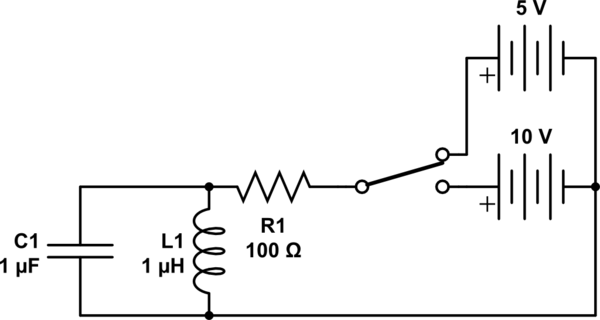I am in the process of solving a DE for a circuit.
So: the circuit starts with a voltage source of 5 VDC and is allowed to reach steady state. At time t = 0, the source is switched out for a 10 VDC source.

I am in the process of finding the initial conditions: $$i_L(0^+)\ \ \mathrm{and}\ \ i_L'(0^+)$$
Clearly, $$v_C(0^-) = 0\ \mathrm{V}\ \ \mathrm{and}\ \ i_L(0^-) = \frac{5\ \mathrm{V}}{100 \ \Omega}$$
So $$i_L(0^+) = 50\ \mathrm{mA}$$
Now, to find iL', I said $$v_L = Li_L'\ \ \mathrm{and}\ \ v_L = v_C$$
So $$i_L'(0^+)=\frac{v_C(0^-)}{L} = 0\ \frac{\mathrm{A}}{\mathrm{s}}$$
But, if you simulate this circuit and flip the switch, the slope of the current through the inductor is clearly not zero.
Am I doing something wrong, or is there something subtle happening?
Thanks




